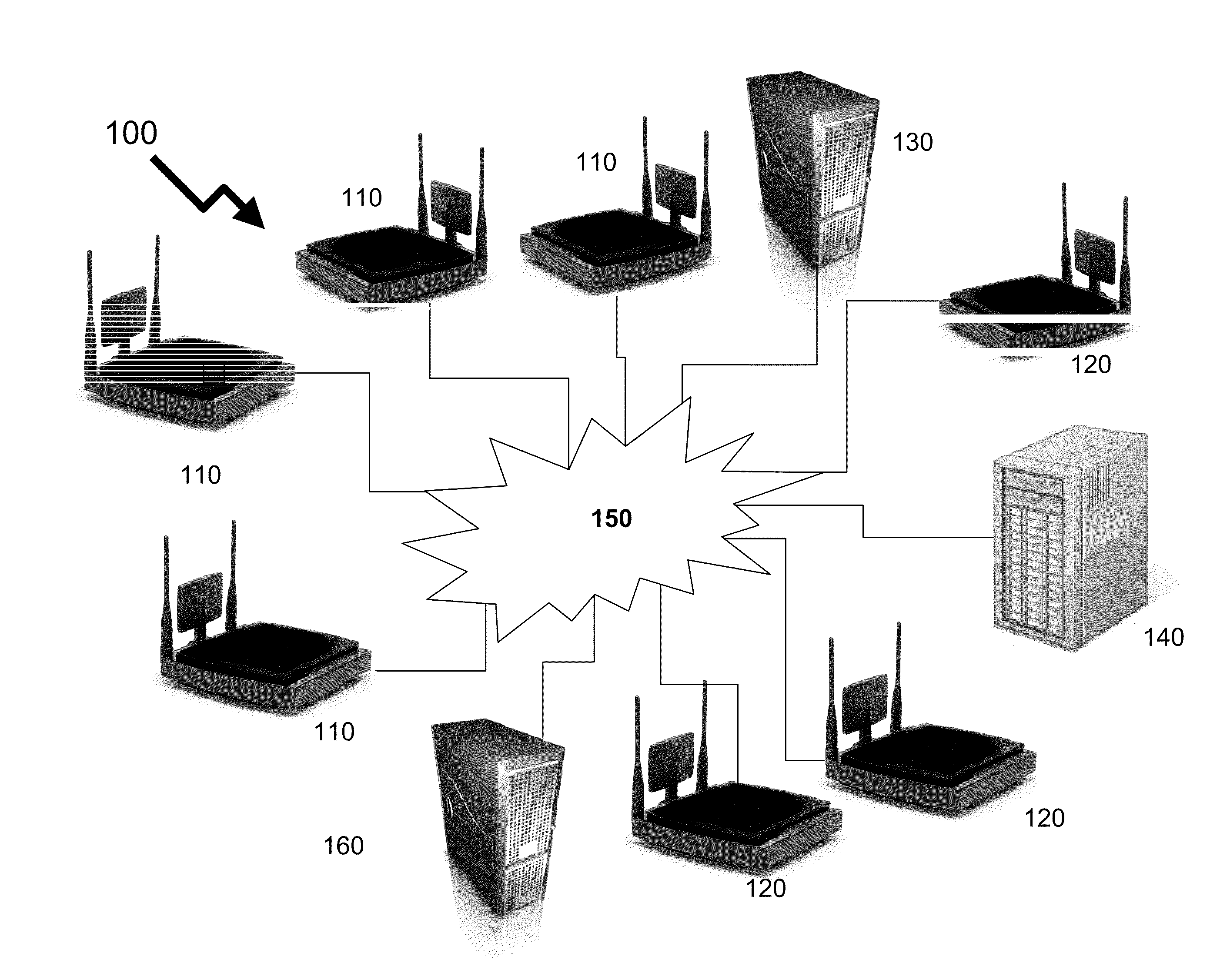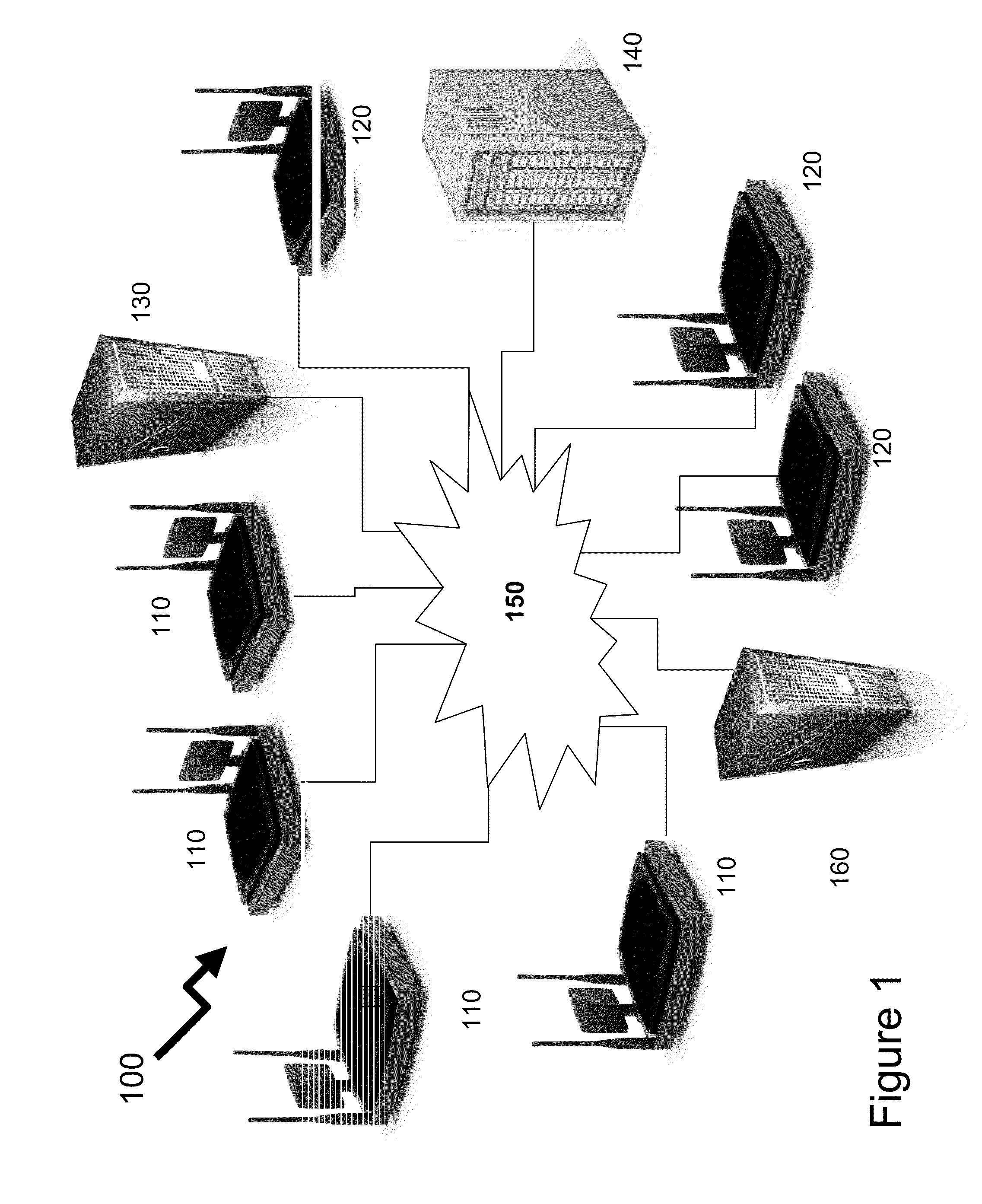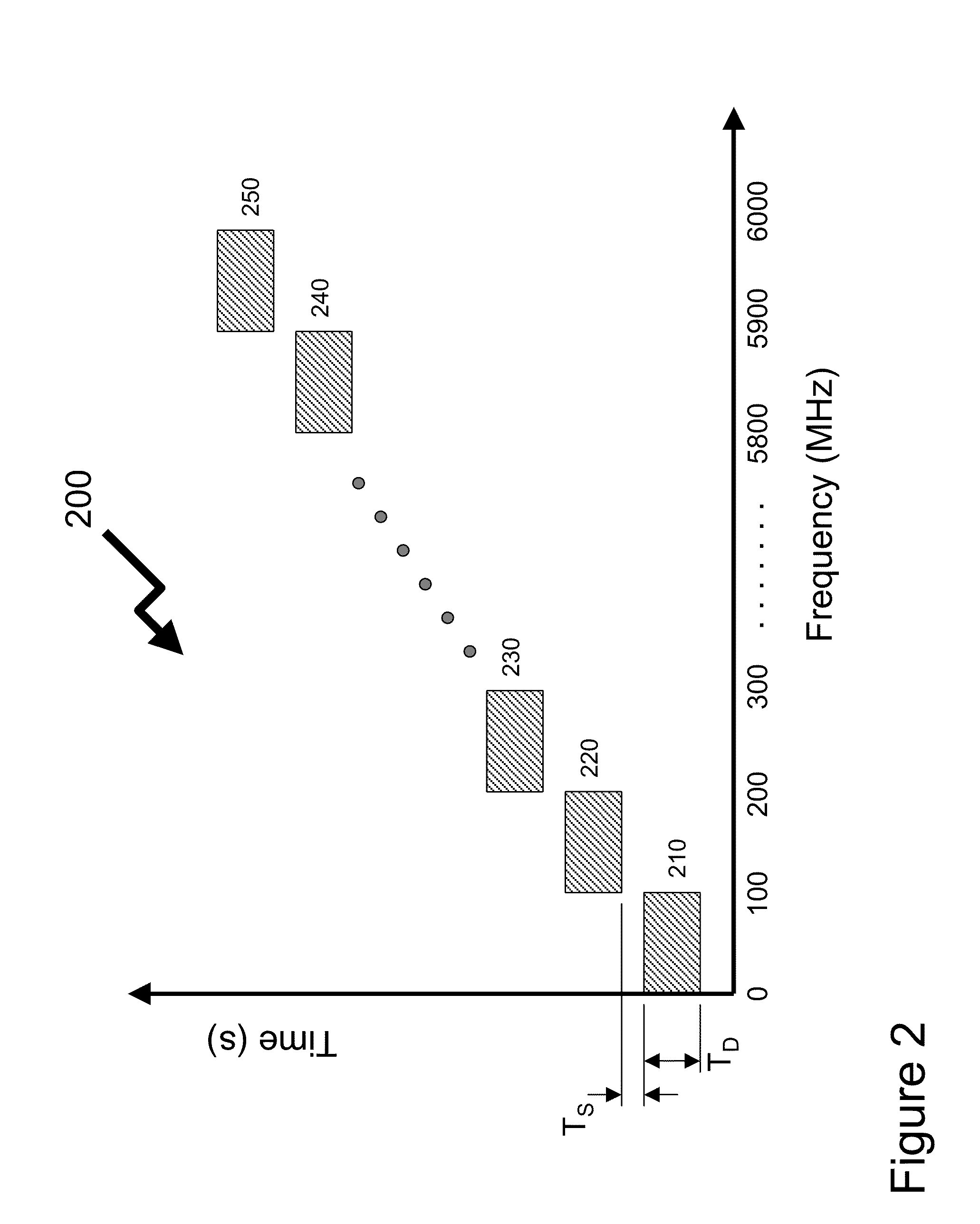System and method for detecting RF transmissions in frequency bands of interest across a geographic area
- Summary
- Abstract
- Description
- Claims
- Application Information
AI Technical Summary
Benefits of technology
Problems solved by technology
Method used
Image
Examples
Embodiment Construction
[0039]The present invention is directed to detecting and analyzing time-varying wireless signals across geographic areas and communicating record of policy breaches efficiently to a central server. Local analysis allows the amount of data transferred across the network to the remote servers to be reduced as well as permitting local action should it be necessary through communications failures for example. It also enables automated and real-time response from the servers to initiate processing on the detected signal. Examples of such processing on the signal analyzers might involve filtering and decimation to focus in on the signal of interest and enable narrowband streaming of data across the network. According to an embodiment of the invention a direct-conversion radio receiver with a digital signal processing system is used to capture and sample or digitize wireless signal transmissions. Sampled data may then be analyzed directly or transformed to the frequency domain and then ana...
PUM
 Login to View More
Login to View More Abstract
Description
Claims
Application Information
 Login to View More
Login to View More - R&D
- Intellectual Property
- Life Sciences
- Materials
- Tech Scout
- Unparalleled Data Quality
- Higher Quality Content
- 60% Fewer Hallucinations
Browse by: Latest US Patents, China's latest patents, Technical Efficacy Thesaurus, Application Domain, Technology Topic, Popular Technical Reports.
© 2025 PatSnap. All rights reserved.Legal|Privacy policy|Modern Slavery Act Transparency Statement|Sitemap|About US| Contact US: help@patsnap.com



